Japan is just in the beginning of the long term recovery effort from the earthquake that struck off northeastern Japan on March 11. The crisis alert level from the damage to the Fukushima Nuclear Power Plant has now been raised to the highest level of impact, the same as the Chernobyl Russia incident 25 years ago. Searchers continue to look for the dead, displaced Japanese live in shelters, protests continue over use of nuclear power, Japan's economic engine may be disrupted, the massive cleanup of debris is just underway, aftershocks are feared and many continue to mourn those who were lost. The photos collected here are from one month to the day of the quake and beyond. -- Lloyd Young (36 photos total)

Buddhist monks, Japan Self-Defense Force personnel, firefighters,
and other relief workers observed a moment of silence on "Hiyori Yama," or Weather Hill, in Natori, Miyagi prefecture, on April 11, 2011, exactly one month after the devastating earthquake and tsunami hit northeastern Japan. Local fishermen used to climb the manmade hump and decide whether it was safe to fish. (Koichi Nakamura,Yomiuri Shimbun/Associated Press)
and other relief workers observed a moment of silence on "Hiyori Yama," or Weather Hill, in Natori, Miyagi prefecture, on April 11, 2011, exactly one month after the devastating earthquake and tsunami hit northeastern Japan. Local fishermen used to climb the manmade hump and decide whether it was safe to fish. (Koichi Nakamura,Yomiuri Shimbun/Associated Press)

2
Elementary school children crouched under their desks at their school in Onagawa, Miyagi prefecture, on April 12, 2011, as a powerful aftershock hit northern Japan. Japan added to the evacuation zone around the stricken nuclear plant, as a powerful aftershock rattled the nation a month after its biggest recorded earthquake wrought devastation. (AFP/Getty Images) 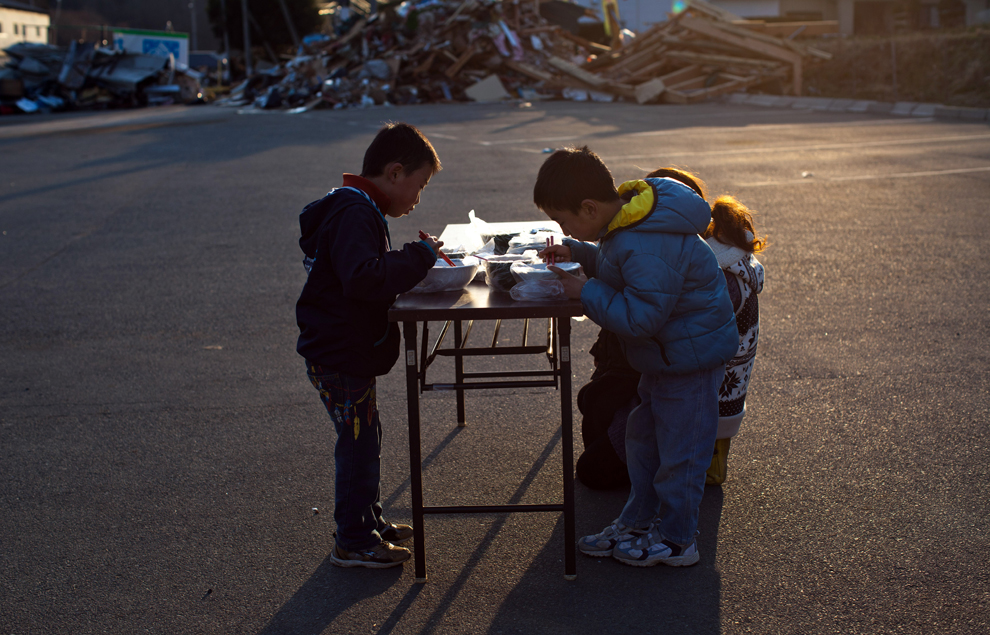
6
Teru Sutou, 8, and his brother Ren, 9, ate a distributed hot stew and rice at a parking lot in Minamisanriku, Miyagi prefecture, on April 12, 2011. Japan's Prime Minister Naoto Kan said that the Fukushima nuclear plant is gradually stabilizing and that the amount of radiation being released is falling. (Yasuyoshi Chiba/AFP/Getty Images) 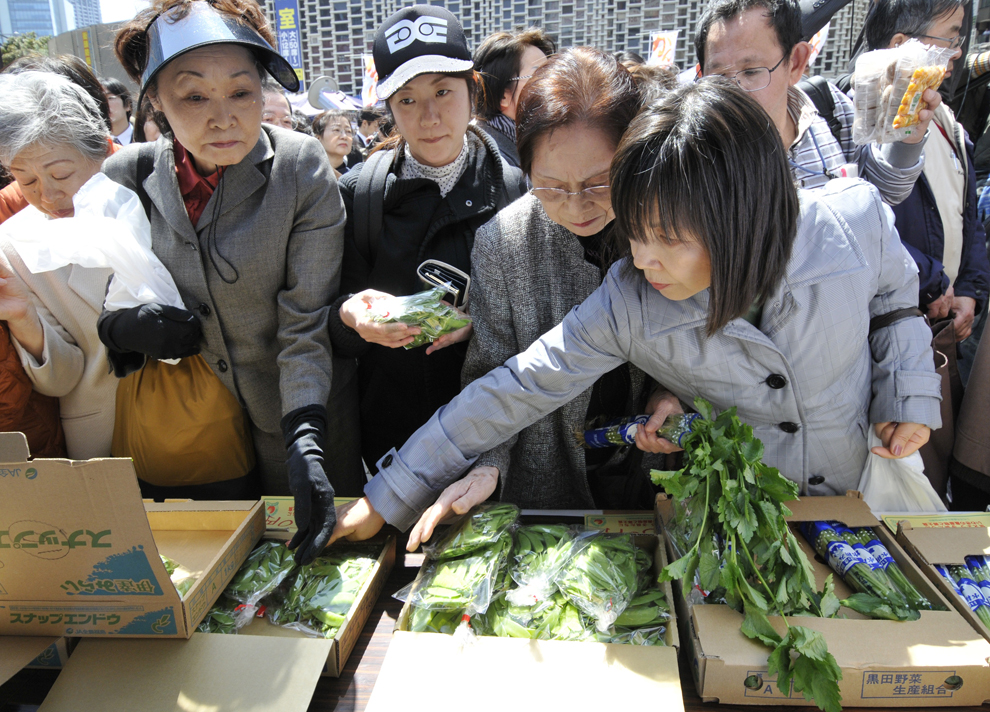
10
Shoppers looked for vegetables during a sale of produce from the city of Iwaki in Fukushima prefecture on April 12, 2011. The government is trying to support farmers in Fukushima who are hurting from dropped sales due to rumors of the spread of radiation from the troubled nuclear power plant. (Yasuyoshi Chiba/AFP/Getty Images) 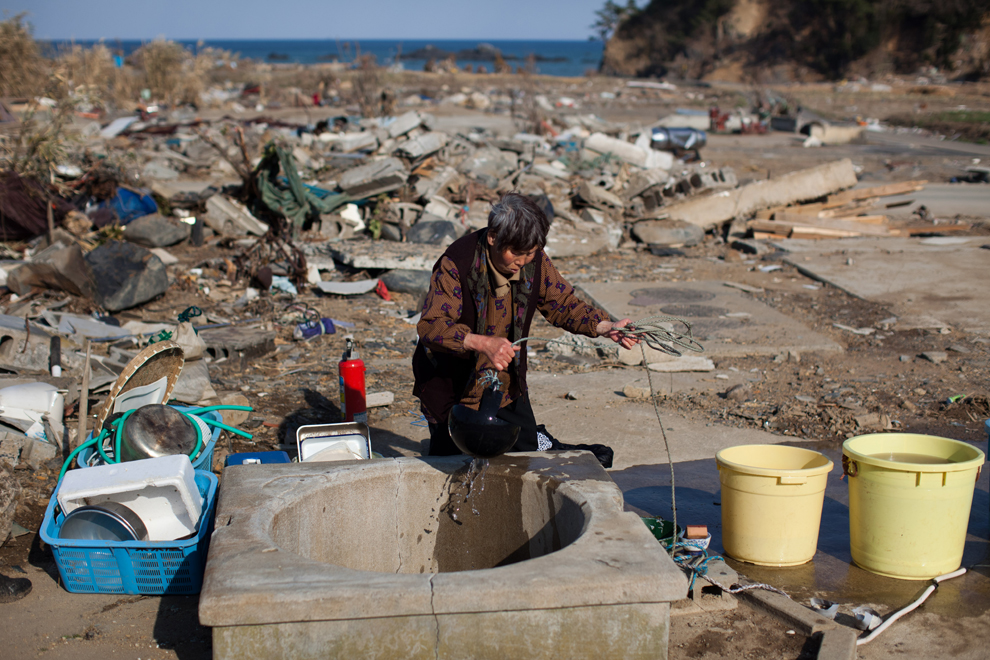
11
Kiyoi Oikawa, 74, collected water from a well with a recycled bucket to wash her clothes from her destroyed home in Minamisanriku on April 12, 2011. Japan's Prime Minister Naoto Kan said that the Fukushima nuclear plant is gradually stabilizing and that the amount of radiation being released is falling. (Yasuyoshi Chiba/AFP/Getty Images) 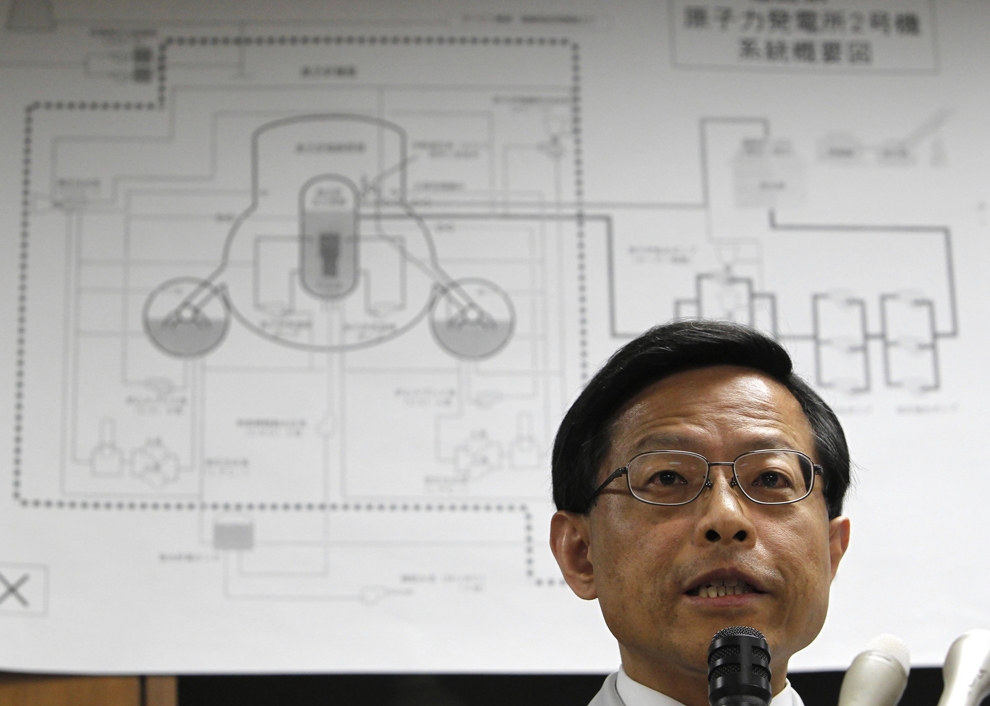
14
Japan's Nuclear Safety Agency official Hidehiko Nishiyama spoke during a news conference on the announcement on nuclear accident severity level in Tokyo on April 12, 2011. Japan raised the severity of its nuclear disaster to seven, the highest level, on Tuesday, putting it on a par with the world's worst disaster nuclear accident at Chernobyl after another major aftershock rattled the quake-ravaged east. (Yuriko Nakao/Reuters) 
15
Fire could be seen in the sampling building near a water drain of TEPCO Fukushima No.1 (Dai-Ichi) nuclear power plant in the town of Okuma in Fukushima prefecture. The fire broke out at the stricken nuclear plant in the morning of April 12, 2011, but was soon extinguished. (TEPCO/AFP/Getty Images) 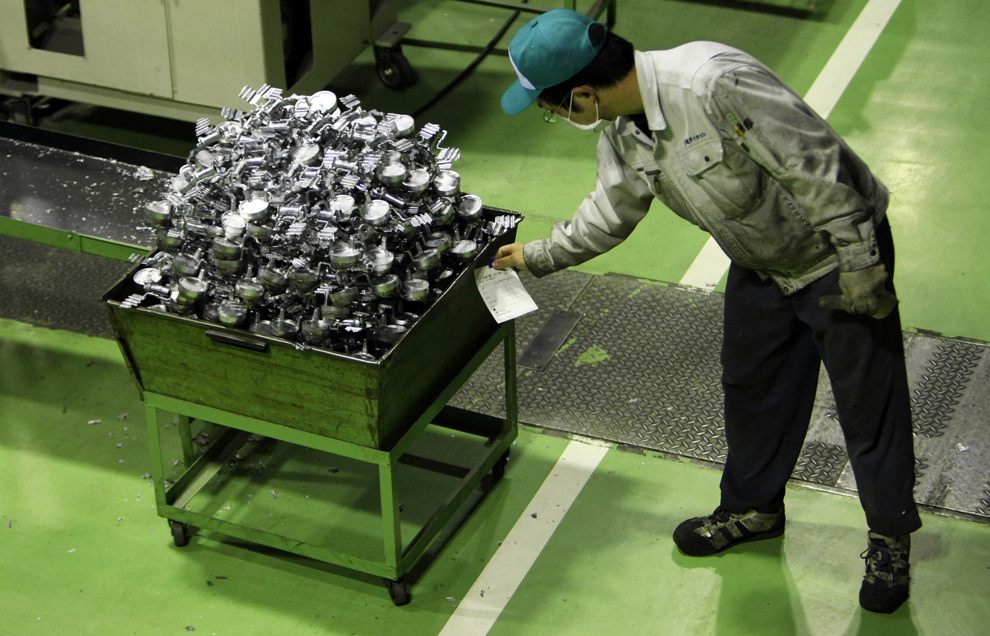
16
An employee inspected auto parts on the production line of Iwaki Diecast Co.'s plant in Yamamoto, Miyagi prefecture, Japan. Toyota Motor Corp. told US dealers that assembly disruptions triggered by last month's record earthquake and tsunami in Japan may thin supplies of vehicles into the third quarter. (Tomohiro Ohsumi/Bloomberg) 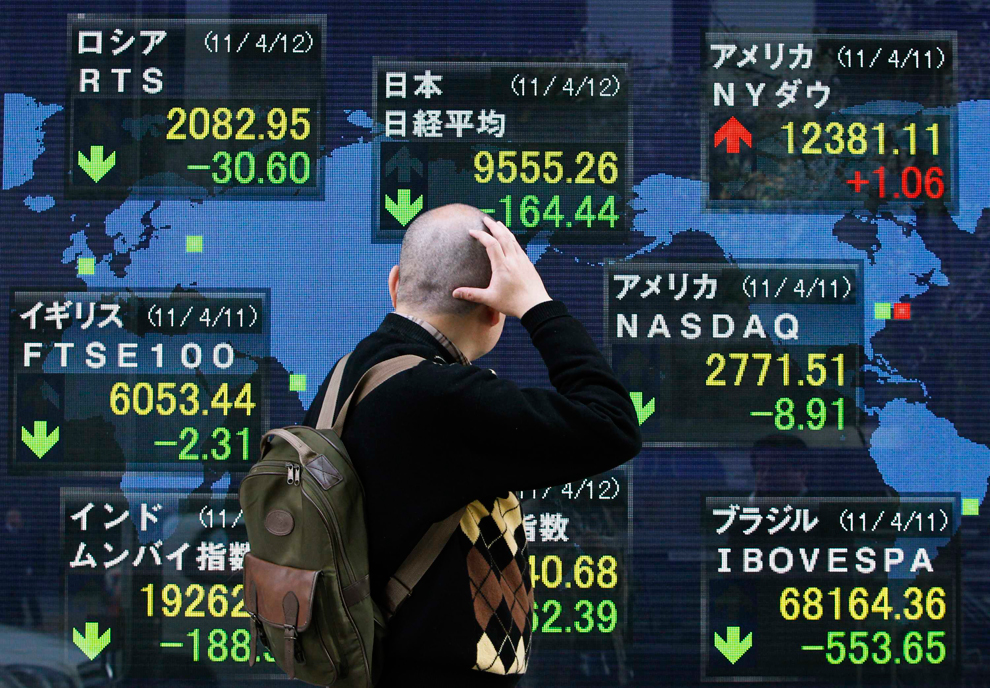
17
A man looked at the closing price of Japan's Nikkei share average (top center) displayed along with major indices outside a brokerage in Tokyo. The Nikkei average dropped for a second straight day April 12 on growing worries that the impact of the March 11 earthquake may be more severe than hoped and as Japan put its nuclear crisis on par with Chernobyl. (Yuriko Nakao/Reuters) 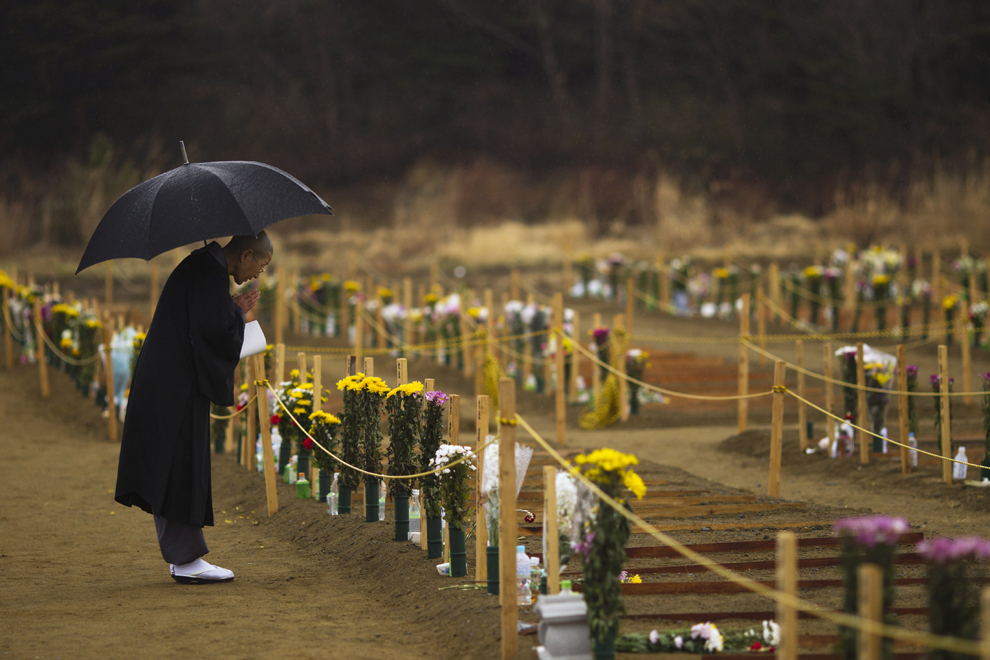
22
A Buddhist monk prayed for earthquake victims at a burial site in Higashimatsushima, Miyagi prefecture, one month after the earthquake and tsunami struck northern Japan. Across the country people stood in silence at 2:46 p.m. local time on April 11 to remember the thousands killed. (Athit Perawongmetha/Getty Images) 
23
Greenpeace activists and other environmentalists lit candles amid hundreds of paper cranes at the Heroes' Monument at suburban Quezon city, Philippines, on April 11 in solidarity to the Japanese disaster victims. The protesters are calling for an end to nuclear power around the world. (Bullit Marquez/Associated Press) 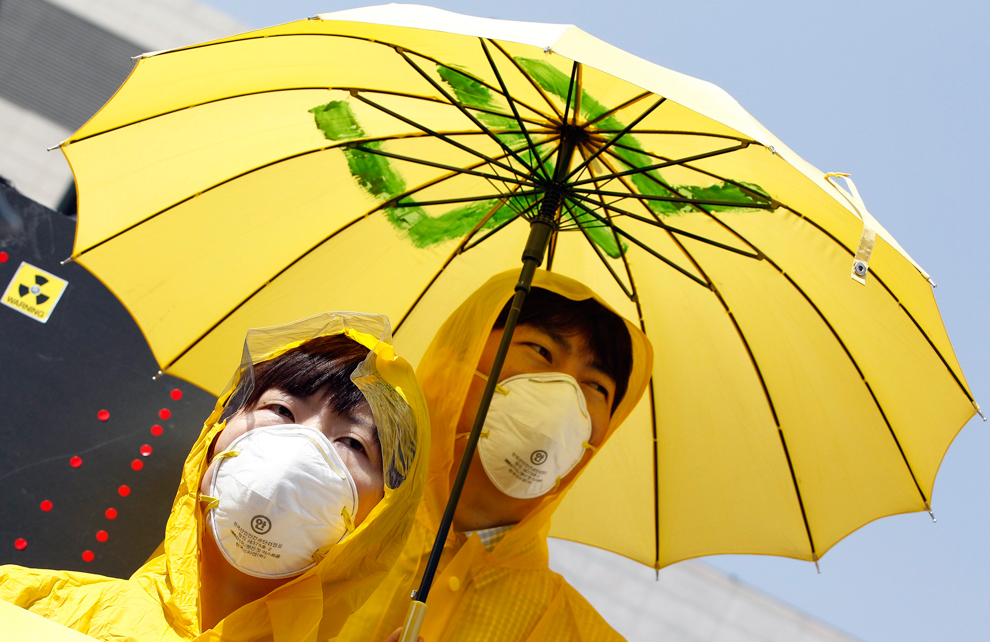
24
People wearing masks and raincoats took part in an antiradioactivity rally in Seoul, South Korea, to urge the government to quickly release information about "radioactive rain" and other risks on April 12, 2011. China and South Korea have been critical of the crippled nuclear plant operator's decision to pump radioactive water into the sea, a process it has now stopped. (Jo Yong-Ha/Reuters) 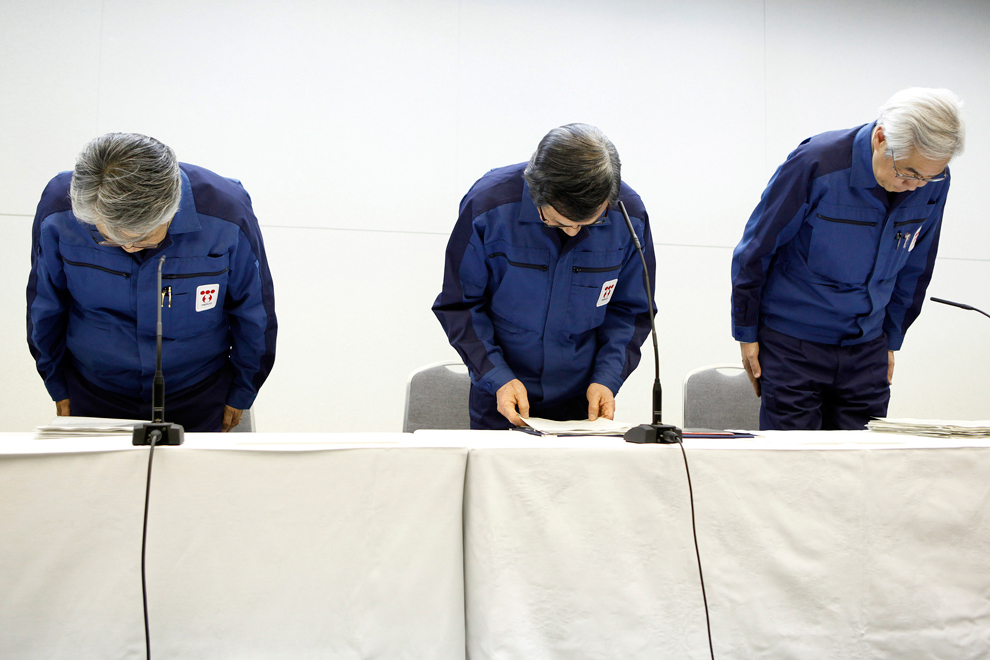
35
Masataka Shimizu (center), president of Tokyo Electric Power Co. , flanked by vice presidents Takashi Fujimoto and Sakae Muto, bowed during a news conference at the company's headquarters in Tokyo on April 13. The president defended the utility's response to the worst nuclear crisis since Chernobyl and pledged pay cuts as workers struggle to control radiation leaks from a crippled atomic power station. (Kiyoshi Ota/Bloomberg) 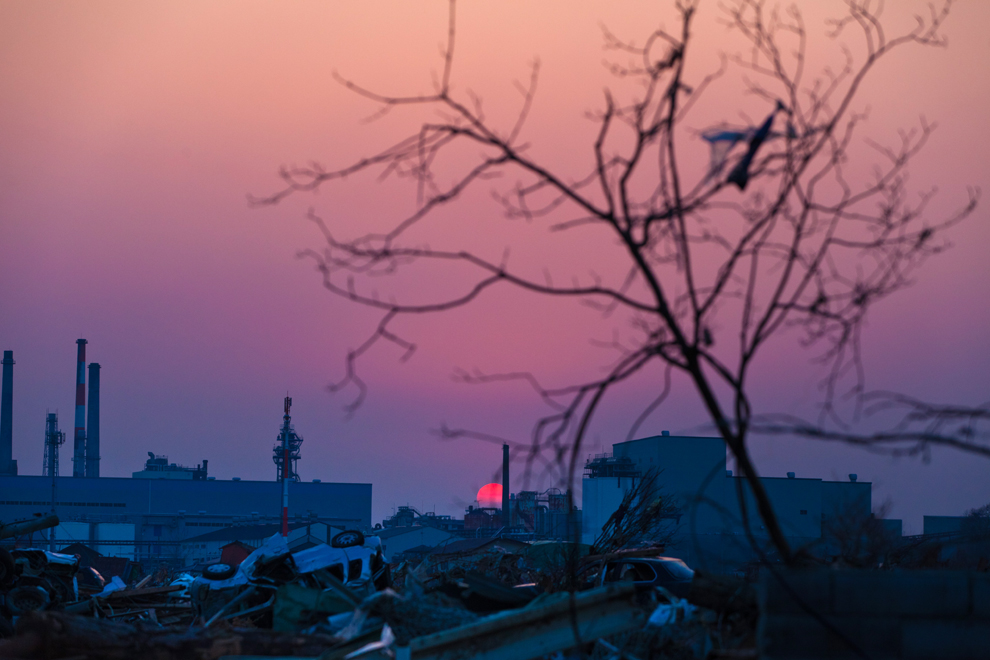
36
The sun set on April 13, 2011, over debris still piled up nearly five weeks after the earthquake and tsunami disaster devastated the city of Ishinomaki in Miyagi prefecture. The impact of Japan's earthquake and nuclear crisis rippled through the economy as the government downgraded its outlook and Toyota announced more temporary plant shutdowns overseas. (Yasuyoshi Chiba/AFP/Getty Images) 





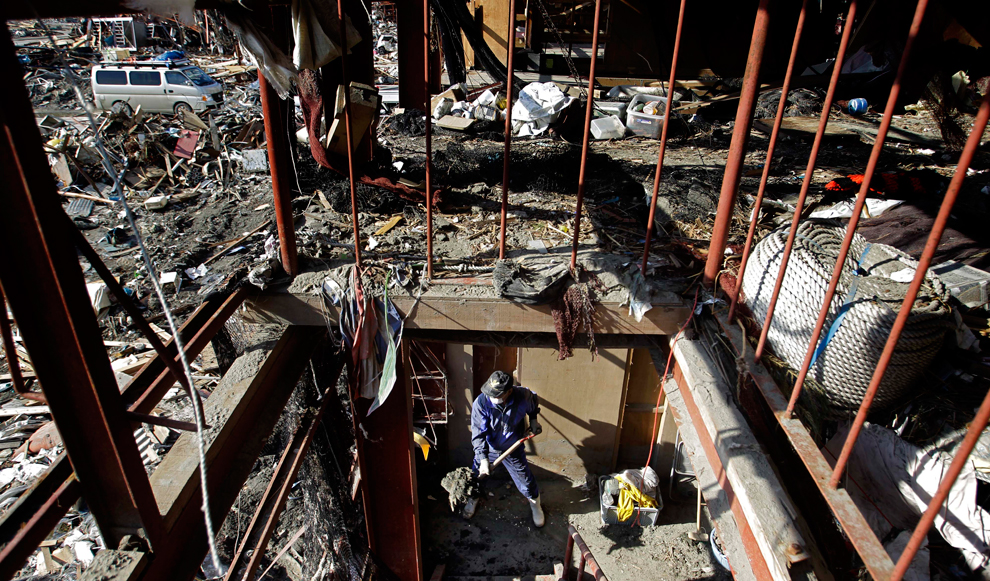
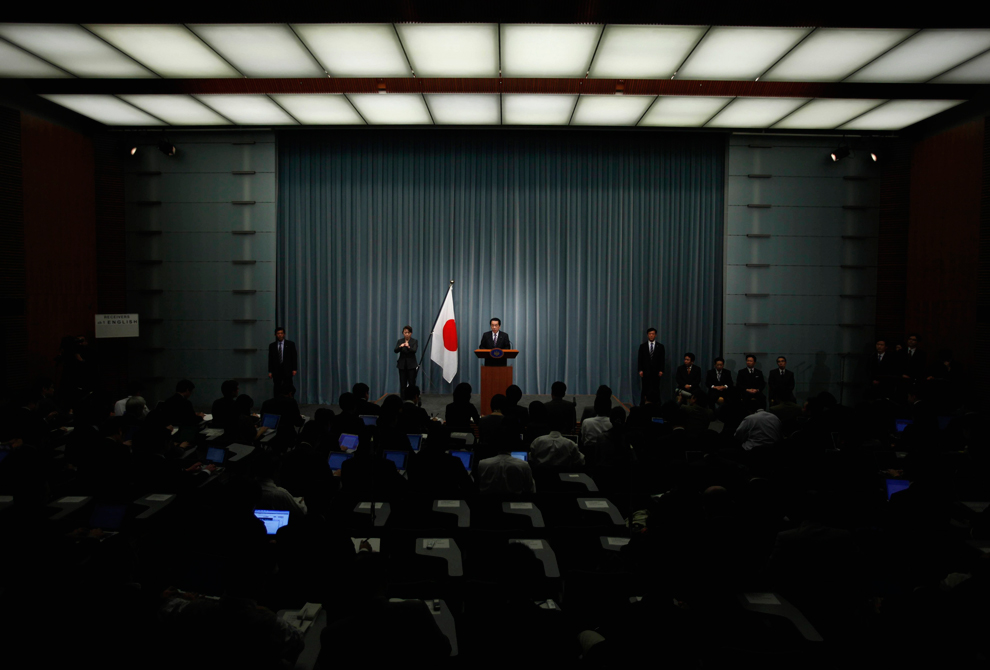

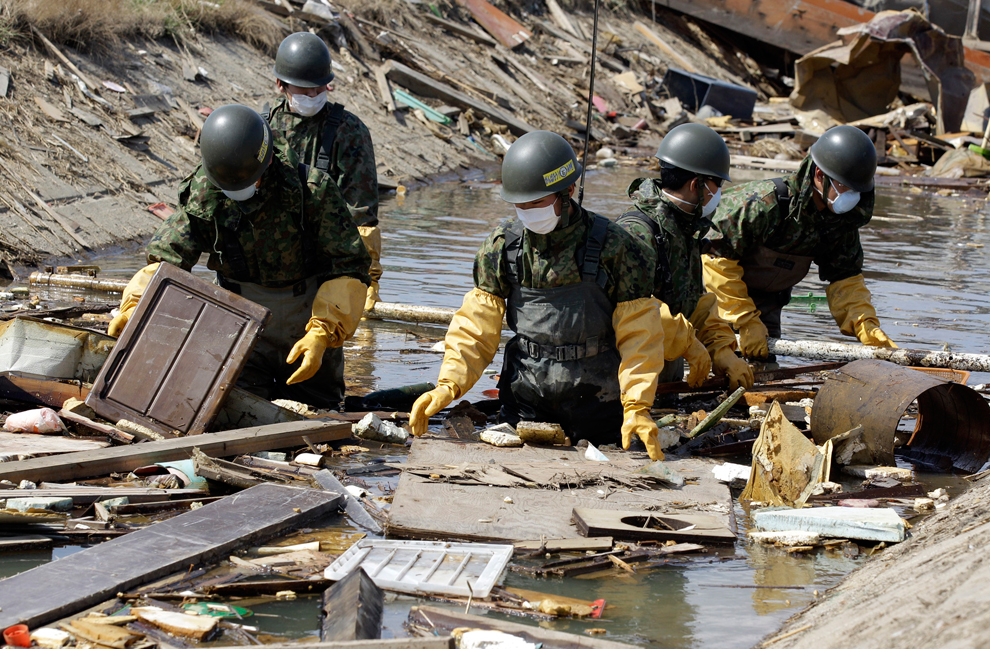
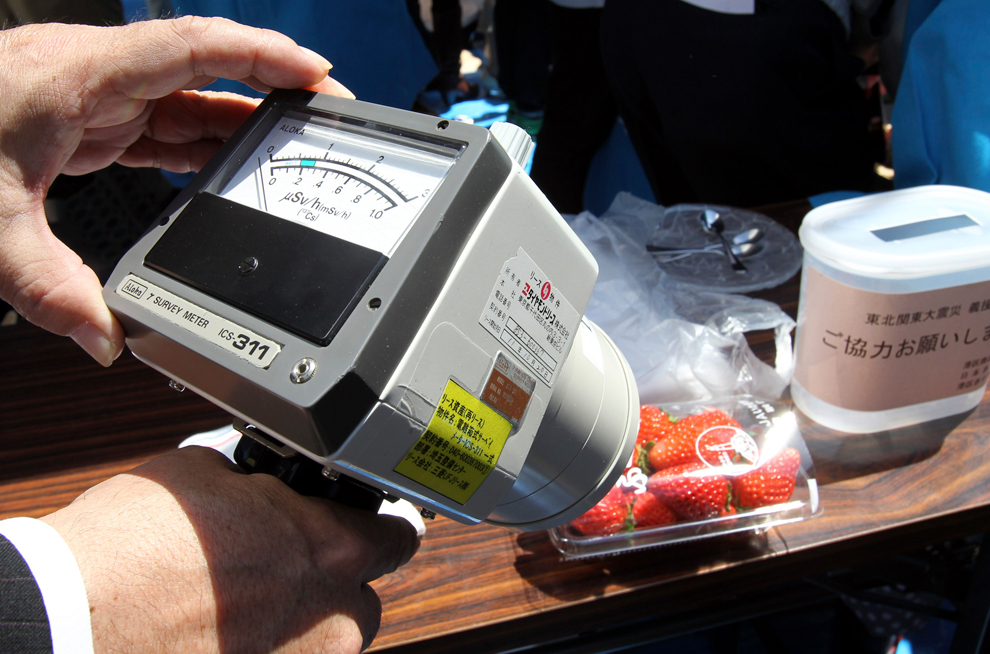
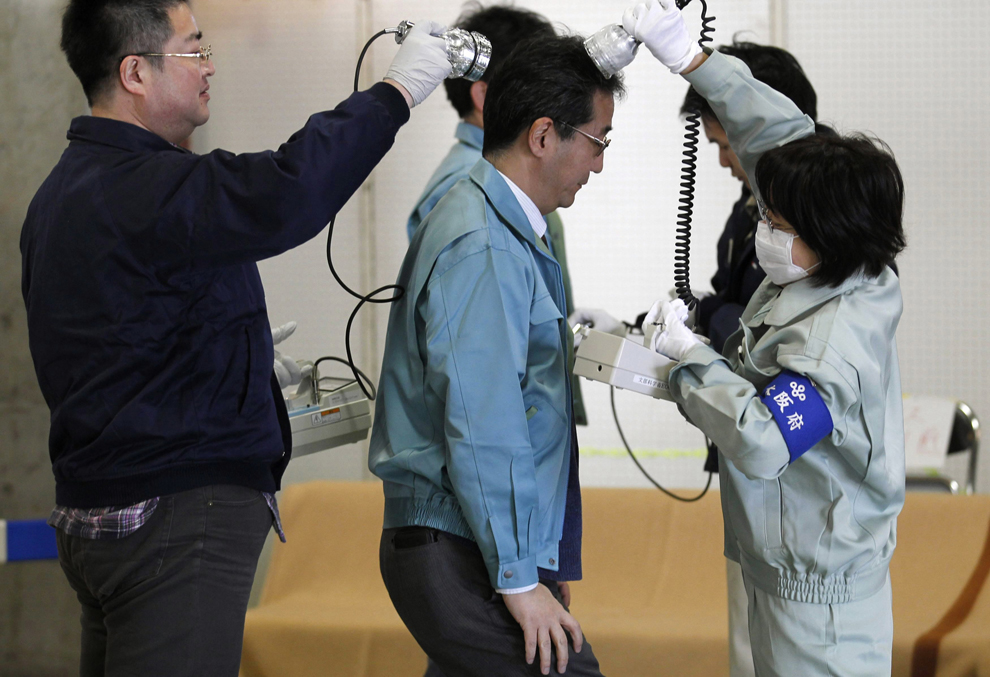
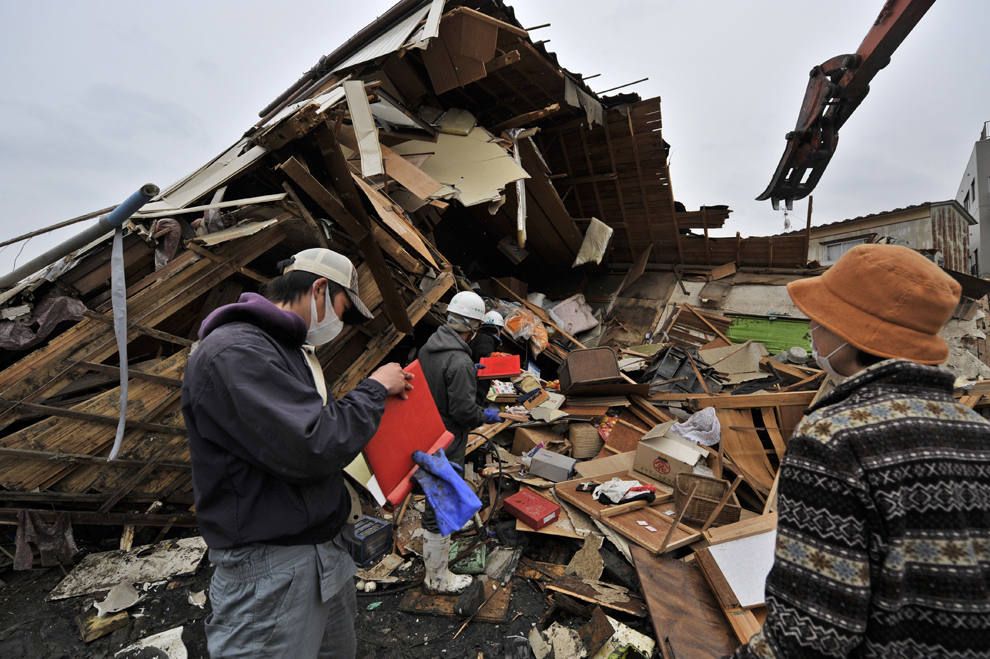
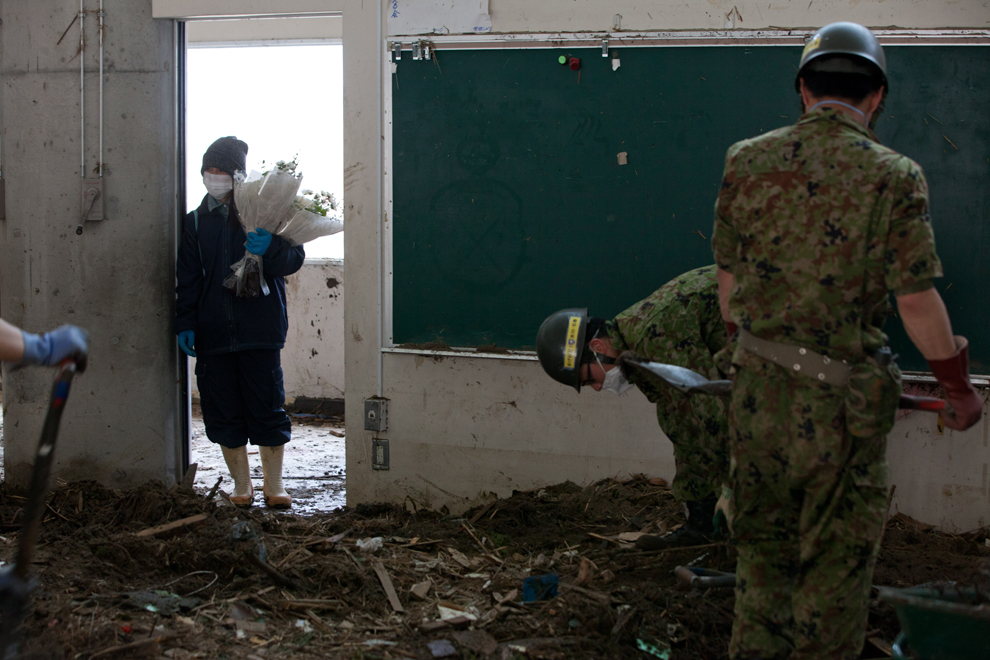
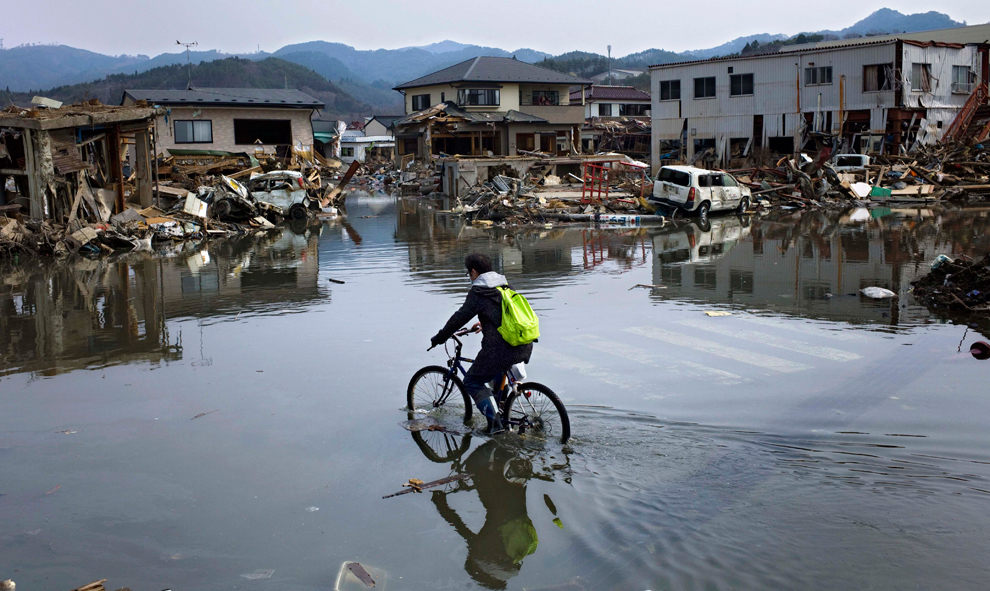
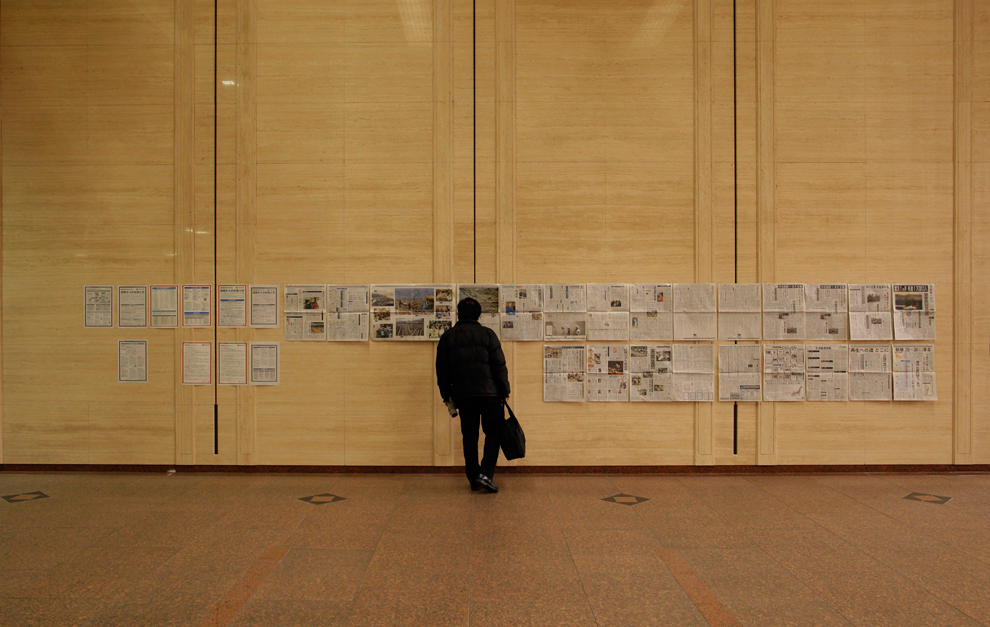
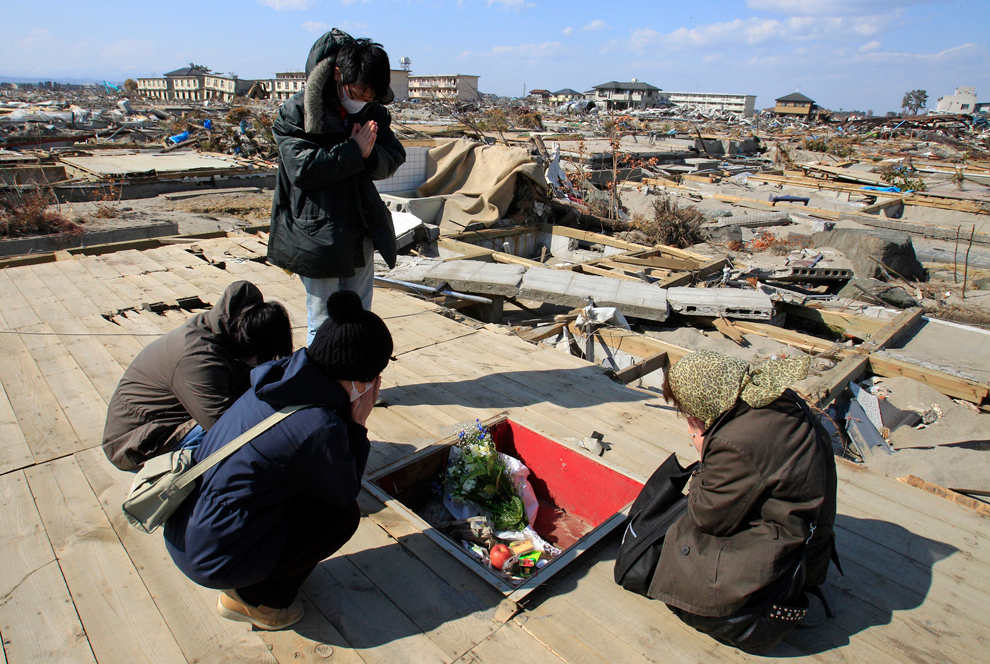
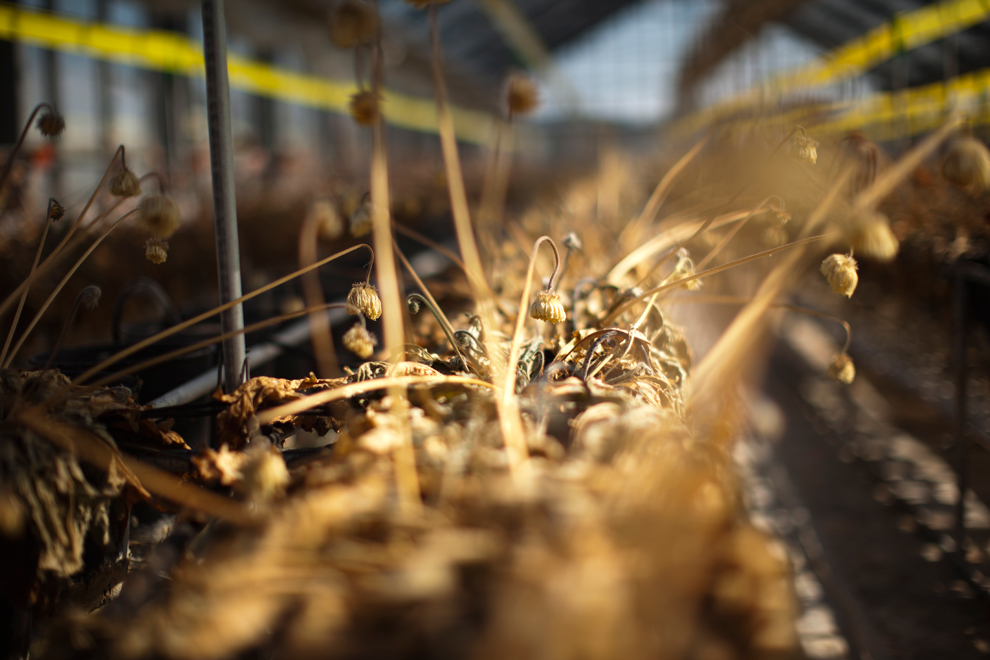
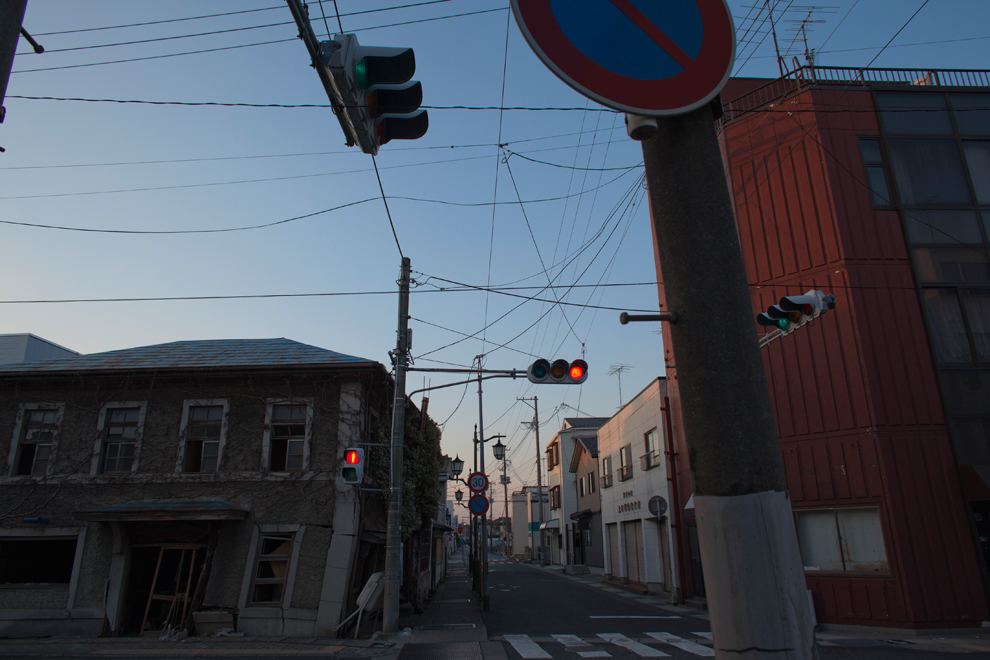
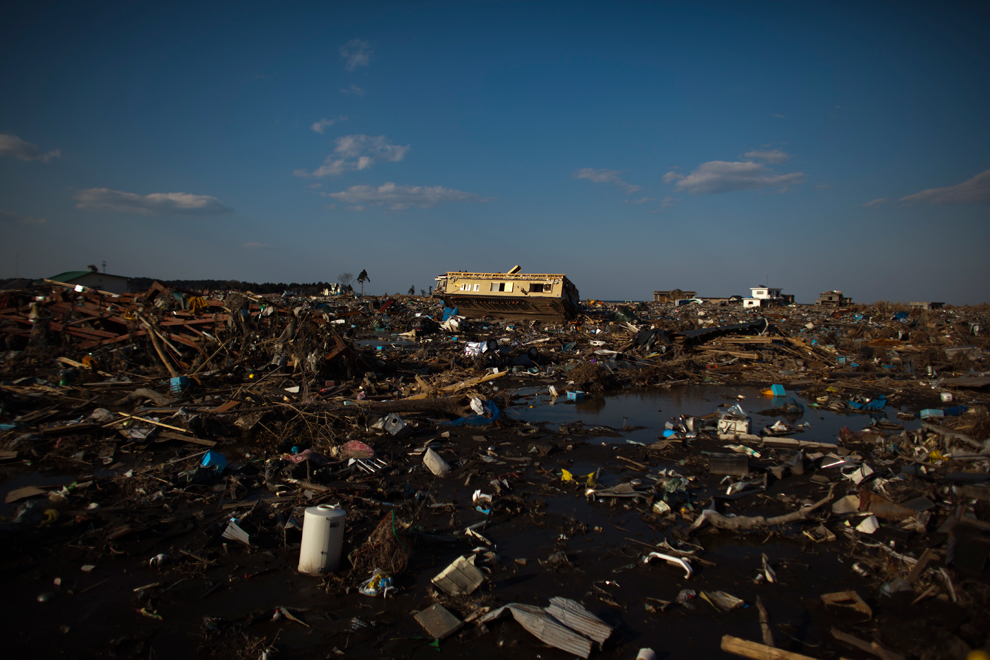
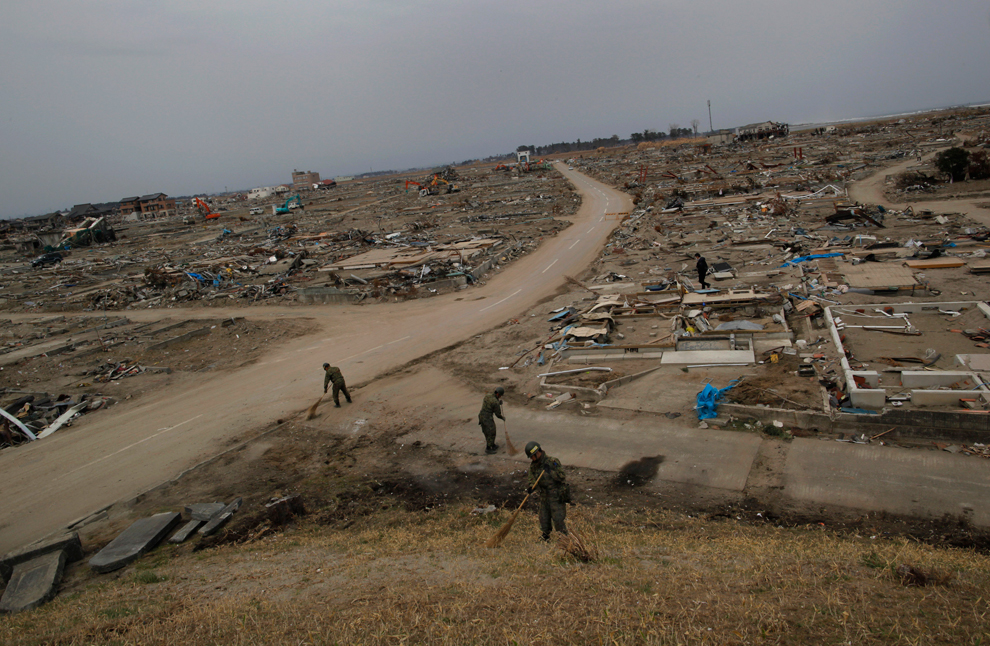
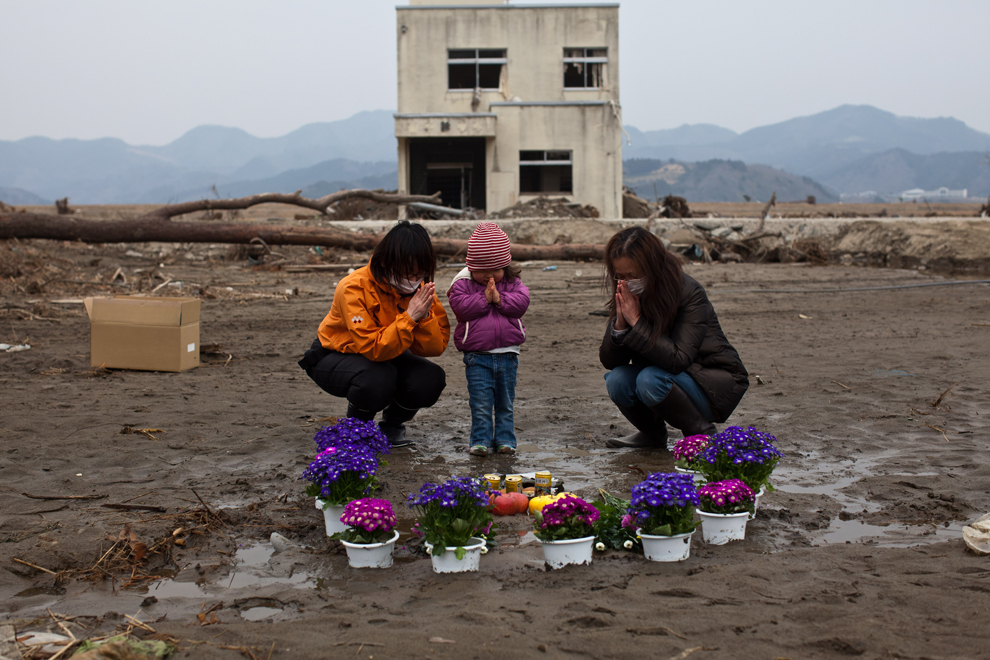
No comments:
Post a Comment